Sachin Tendulkar: India’s divine phenomenon – Almanack
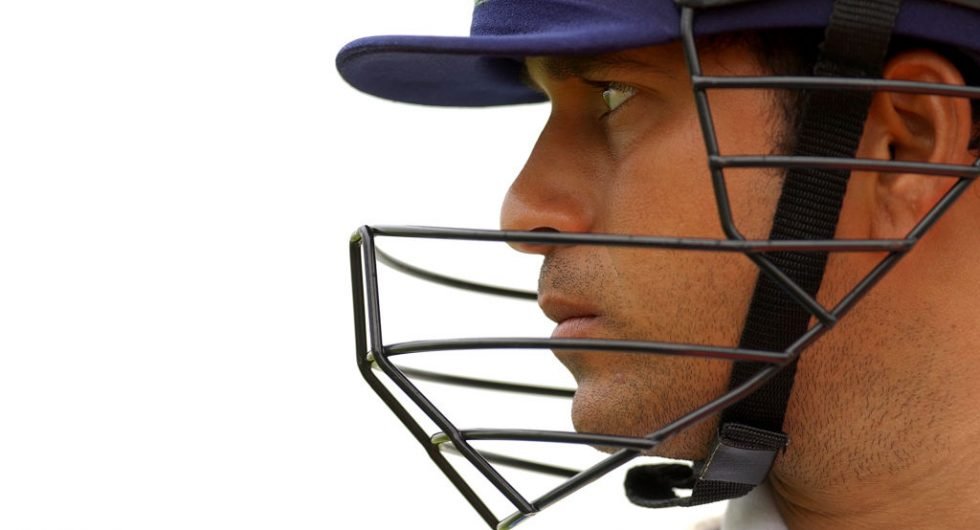
Sachin Tendulkar’s retirement in 2013 marked the end of an era in Indian cricket. His career – and his colossal impact on the game in his homeland – was assessed in the 2014 Wisden Cricketers’ Almanack.
Every Indian fan – and many a non-Indian – has in his head a personal montage of Sachin Tendulkar, the finest sportsman produced by India and, arguably (but not contentiously so), cricket’s most complete batsman. This is not to say he was better than Donald Bradman. But Bradman played in an era when there were immensely fewer demands on a cricketer’s time, body and mind. And, over a 24-year career, Tendulkar played 200 Tests at 59 different grounds, plus 463 one-day internationals at 96.
Bradman’s 52 Tests took place at only ten venues, all in Australia or England, allowing him a cosy familiarity with conditions that Tendulkar – except at a few marquee venues in India – never enjoyed. Add to that the pressure of a fanatical, sometimes insane, nation, and one cannot be denied at least this observation: cricket and country asked more of Tendulkar than they ever did of Bradman, or of anyone else.
But back to the montage. My own has five images. The first is from November 1989 when, as a 16-year-old who looked rather younger, Tendulkar was about to make his Test debut, in Karachi. He is flanked in a winsome photograph by Kapil Dev and Mohammad Azharuddin. The veterans are smiling their trademark smiles – Kapil’s manly and toothy, Azhar’s reliably goofy – and each has a proprietary arm draped around Tendulkar’s shoulders.
They are proud of their ward, who regards the camera almost bashfully, his hair a lush mop of black curls. A boy among men he was, his callow face yet to be bloodied by a Waqar Younis bouncer; even as he grew older, a vital part of him stayed boyish. It’s possible his countrymen kept him from full manhood, their worship freezing him in time.
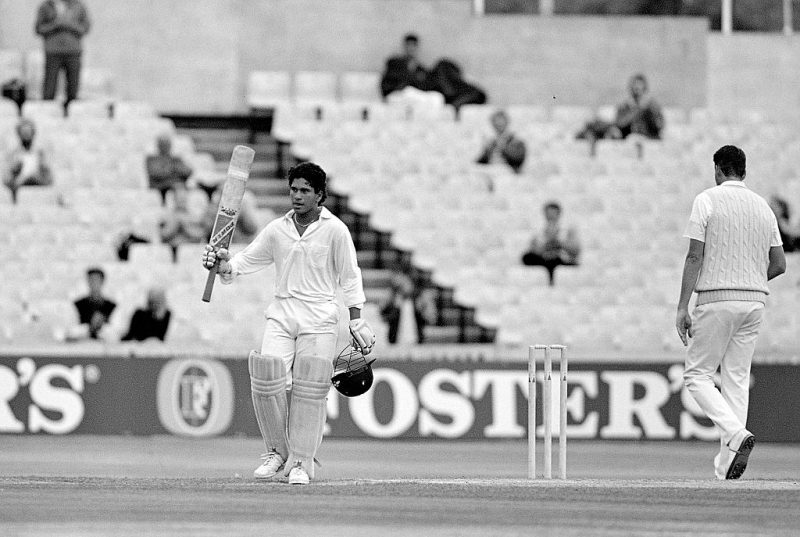
During India’s 1990 tour to England, Tendulkar, aged 17 years and 107 days, became the then second-youngest Test centurion
The second image is from Lord’s, eight months later. England are looking for quick second-innings runs to set up a declaration after Graham Gooch’s endless 333 and Kapil’s cavalier quartet of sixes off Eddie Hemmings to save the follow-on. Allan Lamb skies one back over the head of the bowler, leg-spinner Narendra Hirwani, and a coltish Tendulkar, sprinting in from wide long-off, covers 40 yards and clings on one-handed, low to his right. It is one of the best running catches imaginable, the more so because India could no longer win: Tendulkar was propelled entirely by personal pride. Dazzled by his batting, we tend to overlook the fact that – until MS Dhoni – he was the fittest, most naturally athletic cricketer to play for India.
The third is bitter, but defines Tendulkar just as aptly. Chennai, January 1999, and India – with four wickets in hand – are 17 runs away from a rare Test victory over Pakistan. Tendulkar, on 136, has just pulled Saqlain Mushtaq deftly to the fence. And then he throws it all away, caught at deep mid-off. India lose by 12, which confirms what their fans have started to suspect: Tendulkar, for all his gifts and statistical irrefutability, doesn’t deliver when it really matters. He is the oak that creaks. In one sense, this matters little to his countrymen, for their gods are never infallible (as a cursory glance at Hindu mythology confirms). Yet even in his moment of fallibility, Tendulkar showed physical courage: his back was in such excruciating pain that he batted with a brace, after three injections.
Image four is seared on the brain. Again, it is Pakistan, this time during the 2003 World Cup in South Africa. Shoaib Akhtar, bulging with muscle and ego, steams in at Centurion like a demented bull for the second over of India’s reply to a testing Pakistan total. The ball is short, fast and wide, and Tendulkar scythes it over square third man for six. It is an entirely instinctive stroke, the acme of unorthodoxy. Shoaib’s next two balls disappear for four – a silken flick through midwicket, an on-drive of sheer purity. Both are in utter contrast to the six: Tendulkar is butcher and Brahmin.
It is this duality, this ability to switch instantly from the brutal to the serene, which made him such an irrepressible one-day player. Not blindly wedded to the straight bat (though he was primarily a purist), he had the eye, strength and flexibility of technique to play shots that would have made Viv Richards proud.
The last image is of Tendulkar being held aloft by team-mates after India beat Sri Lanka in the 2011 World Cup final at Mumbai. His face is ecstatic as he is carried around the ground by Virat Kohli and other young guns. They are unbridled in their affection – no, their love – for Tendulkar, an individual genius who is also a team-player and a player-patriot, a mentor, an elder statesman, and an icon, as much to colleagues and opponents as he is to spectators. A senior Indian cricket writer tells me that the country gained new respect for Kohli – hitherto seen as a brash young man, even a borderline lout – when he said: “Sachin has carried the burden of the nation for 21 years. It is time we carried him.” Suddenly, Kohli seemed to have something in common with the whole of India. His quote humanised him.
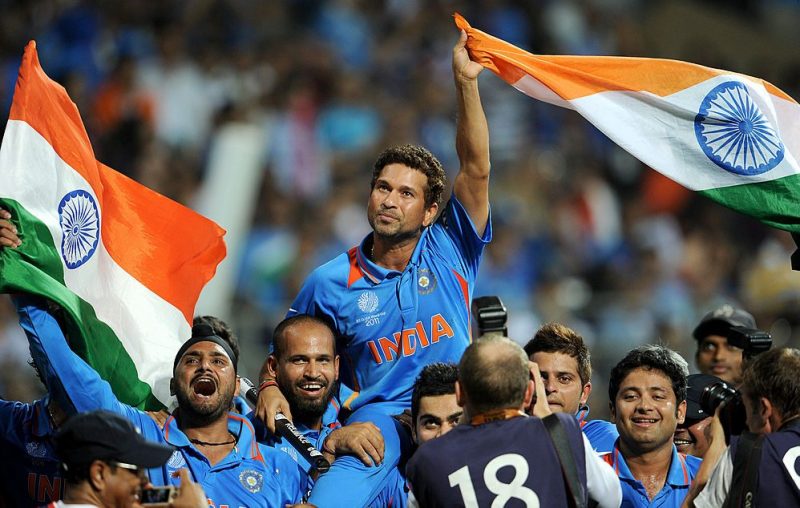
After participating in every edition since 1992, Tendulkar’s sixth and final World Cup saw India lift the trophy in 2011
You will notice that there is no image here from Tendulkar’s last, unarguably moving, day in Test cricket, at Mumbai in November. Allan Donald, an old adversary, once said: “I don’t think I’ve seen a hungrier batsman.” Sometimes there is an imperceptible line between hunger and greed; and to many who watched Tendulkar linger in Test cricket for his last two years, fused like a cussed tenant to his position at No.4, there was a sense that he was not being entirely selfless, that he should have announced his retirement after dismounting from Kohli’s shoulders in Mumbai, a World Cup in his kit bag. In India, this thought could only be whispered. Nor could it be said too forcefully that Tendulkar had become obsessed with playing 200 Tests, that he had (not for the first time) allowed a personal landmark to cloud his judgment.
Will there ever be another cricketer like him? Given the way the sport is evolving (or possibly disintegrating), it is almost certain no one will play as many Tests. His retirement, then, marks the end of a statistical era, the transition from BT to AT, from Before Tendulkar to After Tendulkar. Even the notion of this shorthand offers a nod to his status as an Indian divinity, a status that those from other countries presumably found disconcerting. For it is unlikely Tendulkar would have received the same obeisance had he been born elsewhere.
"There was no one knock that got me hooked. But inevitably, for an Indian boy growing up in the 1990s, my first memory of cricket, the first instance I felt something for the sport, had to do with Sachin Tendulkar."@ojerson8 on the player he fell for.https://t.co/UPmxlfEUbk
— Wisden (@WisdenCricket) April 15, 2020
An English Tendulkar would have been made to wait for his Test debut until 22 or 23, and retired much earlier, his native self-deprecation having trumped any temptation to linger while younger players awaited their turn; adulation, in any case, isn’t an English art. The rugged mateship inherent in the cultures of Australia, New Zealand and South Africa, where there is less of a gulf between player and fan, would have served as an antidote to Tendulkar worship.
West Indies and Sri Lanka have laid-back island cultures, where no man is bigger or prouder than the next, and his popularity depends on his accessibility to fellow citizens. In Pakistan too (for all its reverence of Imran Khan) there is an unwillingness to raise a mortal to superhuman status – a result, no doubt, of Islam. Tendulkar, then, is an Indian phenomenon: a gifted man born in a land where boys can have adulthood thrust upon them quickly, yet retain a structure of family support well into later life.
In fact, Tendulkar is not so much the product of India as of his family: a middle-class boy born to profoundly collaborative parents. His professor father, improbably for a bookish type, was happy for his son to spend more time on cricket than on his studies. And his family arranged for him to live with an uncle and aunt in a different quarter of his native Mumbai to shorten the commute to nets. It mattered not that the boy wasn’t living with his mother and father: young Sachin was saving three hours a day in travel time!
His family’s greatest gift was a cricketing cocoon. Sachin entered into it aged 11 (when, cherished and precocious, he was entrusted to his coach, Ramakant Achrekar) and emerged from it only on November 16, 2013, the day of his retirement. For three decades – to the exclusion of all else – he was able to eat, sleep, breathe and play the game. His older brother, Ajit, devoted his life to Sachin’s cricket, removing him from the demands of a humdrum world. His wife Anjali, a wealthy and grounded woman six years his senior, took charge of the cocoon when she married him in 1995; he was 22.
In contrast to the tumult in the lives of his great batting rival Brian Lara, or his school friend Vinod Kambli, who also played for India but lacked the discipline that can be instilled only at home, Tendulkar never had to worry about anything but cricket.
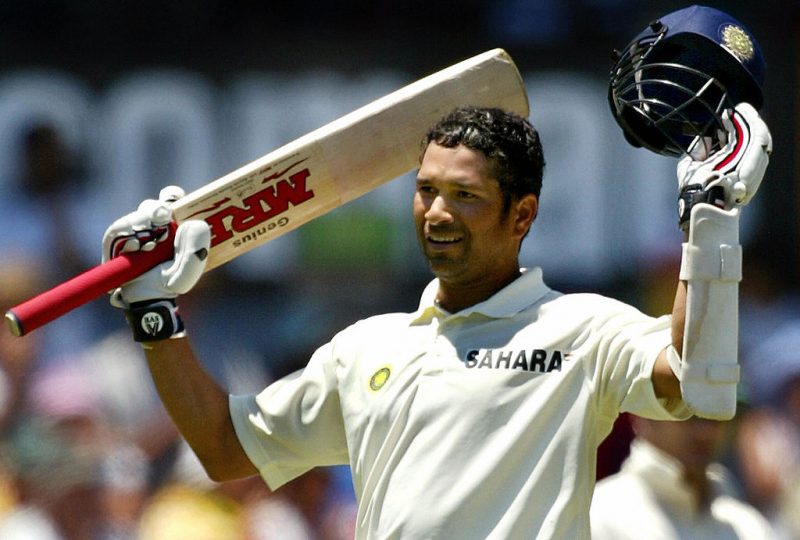
Tendulkar is the only batsman to haved scored more than 30,000 international runs
Did it make him a one-dimensional human being? CLR James’s famous question acquires some piquancy when applied to Tendulkar, for it was evident he knew cricket – and knew only cricket. He had no apparent philosophy that was unrelated to the playing and practice of the game. He was a technician, not a thinker. In interviews he was often banal, as if saying to his interlocutors: “Please, just let my bat do the talking.”
His English and Hindi are imperfect (perhaps because he neglected his schooling), and he reached inevitably for platitudes and diplomatic niceties, as if suspicious of anyone who wasn’t hurling a ball at him. There is no big social issue on which he has taken a public stand – this, in a country awash with worthy causes, any one of which would have received a glorious boost had Tendulkar lent his name. And yet Indian cricket grew gradually stronger for his single-mindedness.
Tendulkar was their first player to be held in awe by other sides – and even feared. The awe came early. When, not yet 19, he flayed Australia in a Test at Perth, Merv Hughes told Allan Border: “This little prick’s going to get more runs than you, AB.” When Border retired two years later, he did so with a Test-record 11,174 runs; and 13 years after that, in November 2007 against Pakistan at Delhi, Tendulkar would prove Hughes right. He would overhaul Lara the following October, since when Tendulkar has always been top of the tree; his Test tally of 15,921 may never be broken.
Every bowler raised his game when charging in at Tendulkar, if only there were some way of factoring that extra effort into the value of his runs. For Indian fans, opposition bowlers became defined by their showdowns with him. James Anderson – who dismissed Tendulkar nine times in Tests, more than anyone – wasn’t just James Anderson: he was James-Anderson-when-bowling-to-Tendulkar. And so it was with Courtney Walsh, Glenn McGrath, Muttiah Muralitharan and Dale Steyn.
Donald, quoted in Vimal Kumar’s Sachin: Cricketer of the Century, offered an example of the phenomenon: “My fondest memory of Sachin is bowling him through the gate in the Durban Test. There is no question about the fact that it was the best-ever ball that I bowled in Test cricket.”
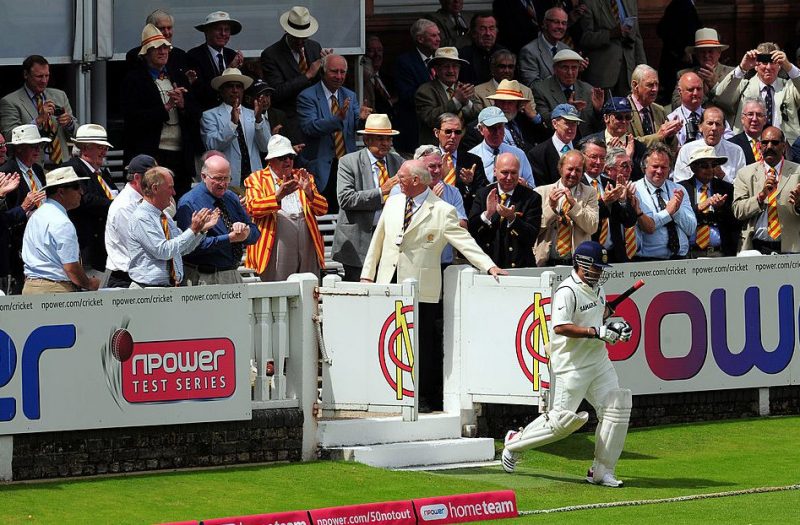
Tendulkar failed to score a single Test century in the last two years of his career
At the spectrum’s less rarefied end, Michael Vaughan has dined out on the off-break that once sneaked through Tendulkar in a Test in Nottingham; it was the man who mattered, as much as the delivery. Despite this, his retirement does not leave Indian cricket noticeably weaker. After all, the batting line-up had been carrying him for two years, the result of Tendulkar being allowed to choose the time of his own retirement. He played on for 23 Tests after the 2011 World Cup final, averaging a downright un-Tendulkarish 32, as against nearly 57 until then. Just as tellingly, he became more susceptible to the straight ball: in that final phase, he was either bowled or lbw in 49% of his innings; until then, the figure had been 34%.
But what Indian cricket – or, more specifically, Indian batting – now has is a fearlessness that was missing in the BT years. Self-belief is Tendulkar’s greatest bequest to his country’s cricket. To everyone else he gave something of equal consequence: joy, and pleasure – the pleasure that comes from watching a simple, unaffected man perform beautiful feats with the bat, year after year after year.
First published in 2014

